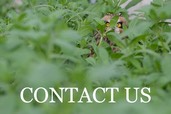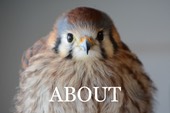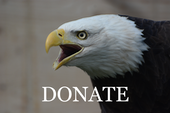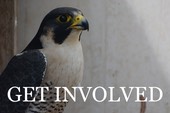Metabolic Bone Disease in a Young Hawk
Most people know raptors are predators and hunt/eat other animals. For some reason “other animals” is often interpreted as meat, specifically hamburger. Meat has virtually no calcium in it. A young growing raptor needs lots of calcium in its diet for normal bone development and metabolic processes.
Such was the case for a young Swainson’s Hawk nestling who fell out of its nest and was “rescued” by an individual who kept it for three weeks, feeding it hamburger and human baby food, a diet with virtually no calcium in it.
As the hawk grew, it pulled calcium from the only source it had, its bones, to meet the needs of normal metabolism. As the bones grew they became less dense, eventually breaking under the weight of the bird's body. By the time the hawk reached BMW it had advanced metabolic bone disease and multiple pathological fractures the result of its improper diet. The damage was not reversible and the hawk was euthanized.

If you find a baby bird, or any other young wildlife, please call the closest wildlife rehabilitation center. They will help you determine if the baby needs to be rescued and the best course of action. Don’t feed it anything! These are heart-breaking cases.
Denio, the Amazing Golden Eagle

Dr. Brian Williams and Dr. Susan Fazzari of Animal Clinic East in Walla Walla, WA, were prepared to repair Denio’s fractured femur last Thursday (see last week’s Journal for the background story). The surgery was called off when they determined that the fracture had already healed - lots of calcium in the jumbo rats that she has been eating! Alignment is poor, but remodeling will occur over the next months until the femur is a normal shape. Her right leg will be slightly shorter than the left leg. Hopefully her young age will allow her to successfully adapt.

Thank you Animal Clinic East doctors and staff for caring for injured wildlife and your awesome support of Blue Mountain Wildlife.
New Harrier Hack Site
Interns Parks and Ariel assembled a hack site for 5 Northern Harrier nestlings made homeless when the mint field that housed their nest was harvested. Harriers are ground-nesting hawks who sometimes nest in a variety of agricultural crops. Hacking is a method of raising baby raptors that mimics the care provided by their parents.



Pied-billed Grebe
A young Pied-billed Grebe apparently tried to land on wet pavement, thinking it was a body of water. Initially it not could not pick up its head.There has been some slight improvement. Grebes are interesting duck-like creatures who swim and dive for fish.



Thank You Volunteers
BMW is fortunate to have the most dedicated volunteers imaginable who drive hundreds of miles each month (sometimes each week!) on behalf of wildlife needing care. This week we had help form Mark, Wayne and Jim in the Yakima area, Claudia, Dan, Toni, Don, Laurel and Michele in the Tri-Cites, Sue in Walla Walla, Tara, Jim, Bill and Patty in Baker City and Joe and Cordi in Vale. Thank you also to the Pet Health Clinic in Sunnyside, WA, Prosser Animal Hospital, Animal Clinic East in Walla Walla and Pendleton Veterinary Clinic. What a great team!







